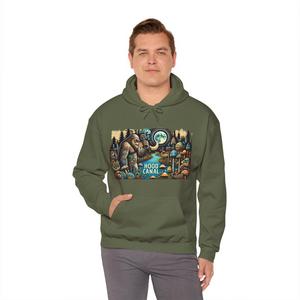Exploring Hood Canal: A Journey Through Time and Nature Hood Canal, a natural wonder of the Pacific Northwest, is not only a scenic retreat but also a place rich in history and ecological diversity. This fjord-like waterway, which is actually a natural inlet of the Puget Sound, has been a vital part of the region’s geography and culture for thousands of years. Geological Origins The story of Hood Canal begins about 13,000 years ago during the Late Pleistocene era. The retreat of the Cordilleran Ice Sheet, which once covered vast areas of North America, carved out the long, straight valleys that now make up the Puget Sound area, including Hood Canal12. This glacial activity left behind a landscape that would become a crucial habitat for a wide array of plant and animal species. Cultural Heritage Long before European explorers set foot in the region, the Hood Canal was home to the Twana people, who lived in cedar plank homes and thrived on the abundant resources provided by the land and sea2. The Twana spent winters in villages near the mouths of major rivers and traveled extensively for trade during the warmer months. European Exploration The name “Hood Canal” was bestowed by Royal Navy Captain George Vancouver on May 13, 1792, in honor of Admiral Lord Samuel Hood1. Vancouver and his crew ventured into the canal in longboats, leaving behind a legacy of European names as they mapped the region. Despite the passage of time, the canal remains much as it was during Vancouver’s exploration, with small towns and regrown forests replacing the earlier settlements2. Modern Developments Today, Hood Canal is a hub for recreation and tourism. It’s a place where people come to escape the hustle and bustle of city life and enjoy activities like fishing, boating, and shellfish harvesting. The canal is also an important site for the U.S. Navy, with the Naval Base Kitsap located along its eastern shore near Silverdale1. Environmental Significance The canal’s unique environment supports a diverse range of wildlife, including fish, shellfish, and marine mammals. Its waters are home to species like the Harlequin duck and the majestic orca, while the surrounding forests provide habitat for black bears, elk, and other wildlife. Conclusion Hood Canal is more than just a body of water; it’s a living tapestry of history, culture, and nature. From its glacial origins to its current status as a beloved natural resource, the canal continues to be a source of sustenance, inspiration, and adventure for all who visit its shores. |
 |



